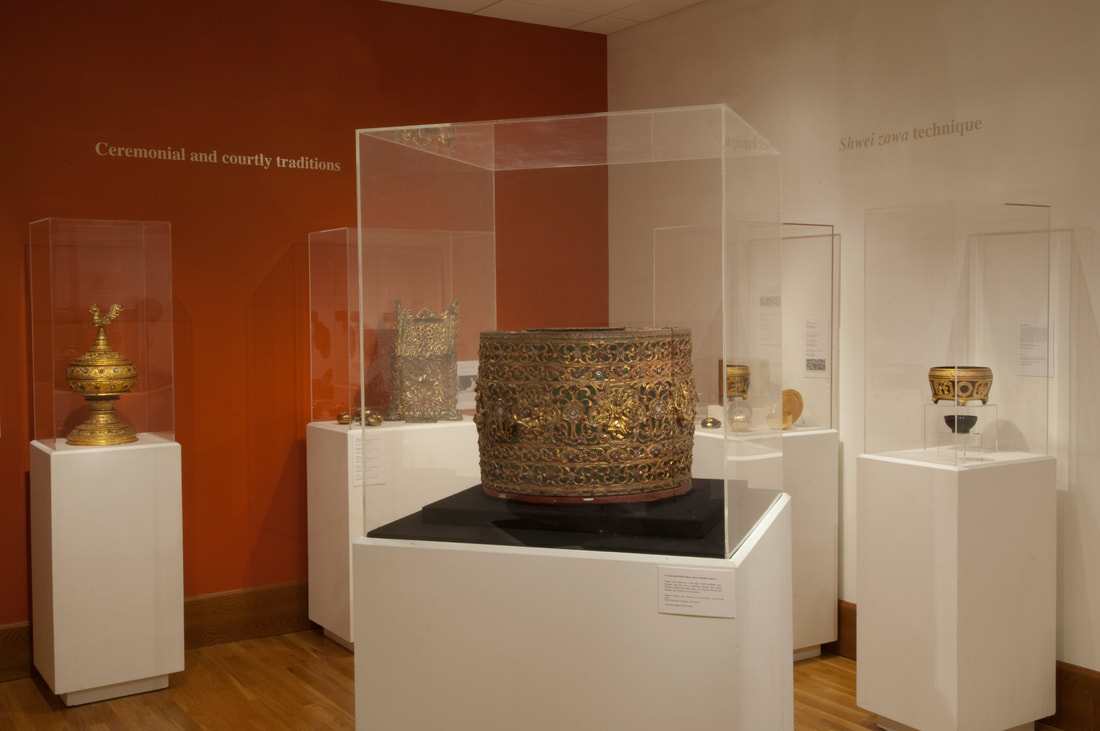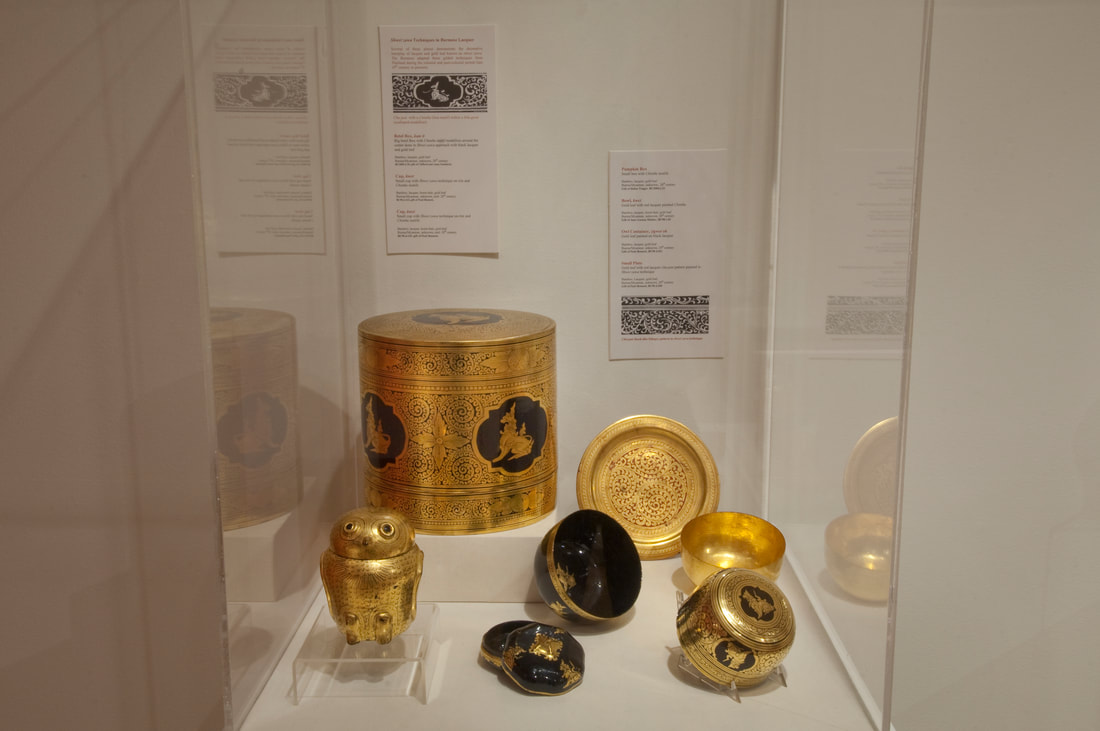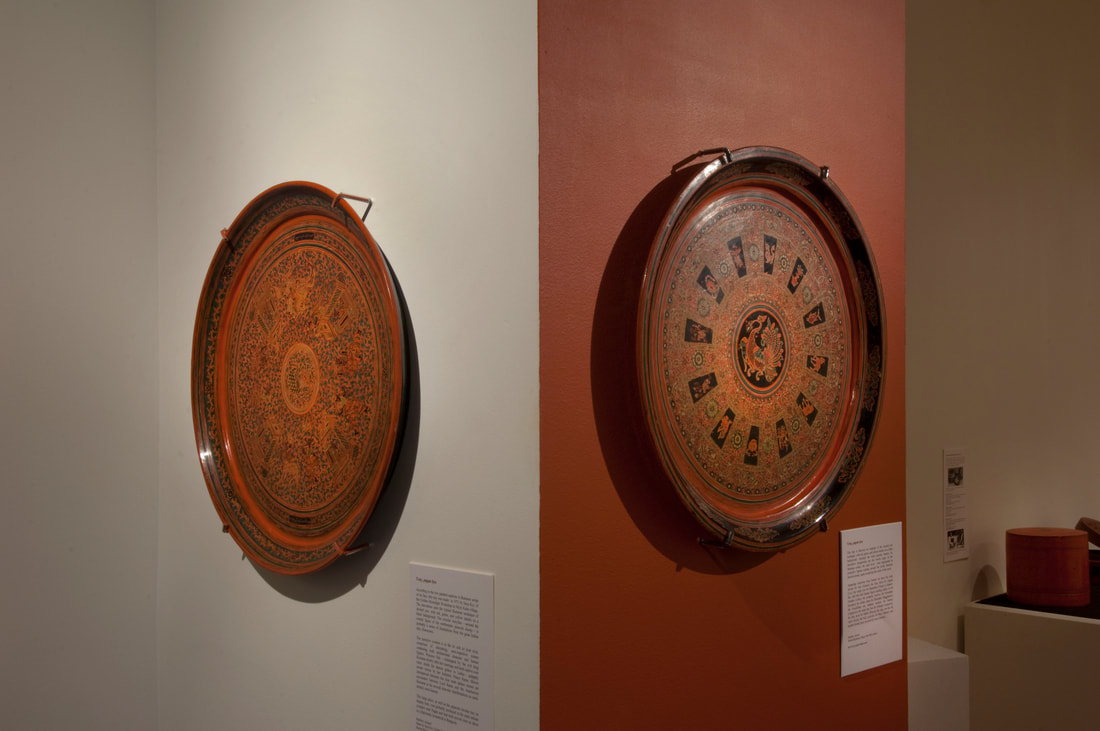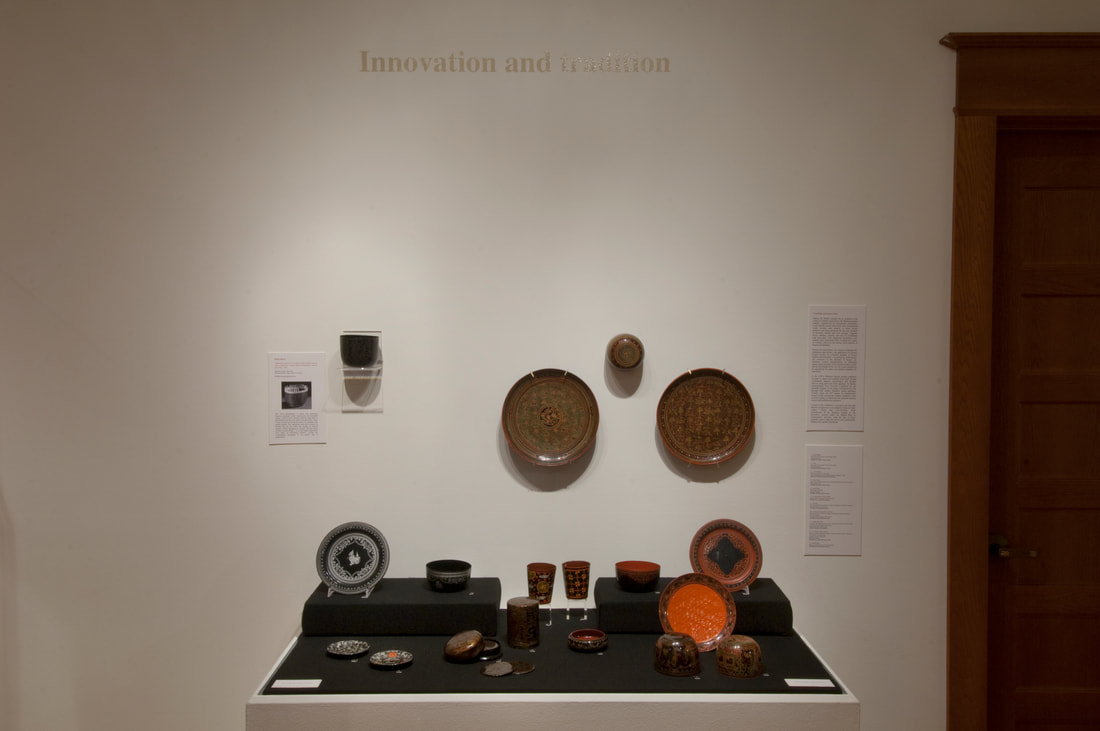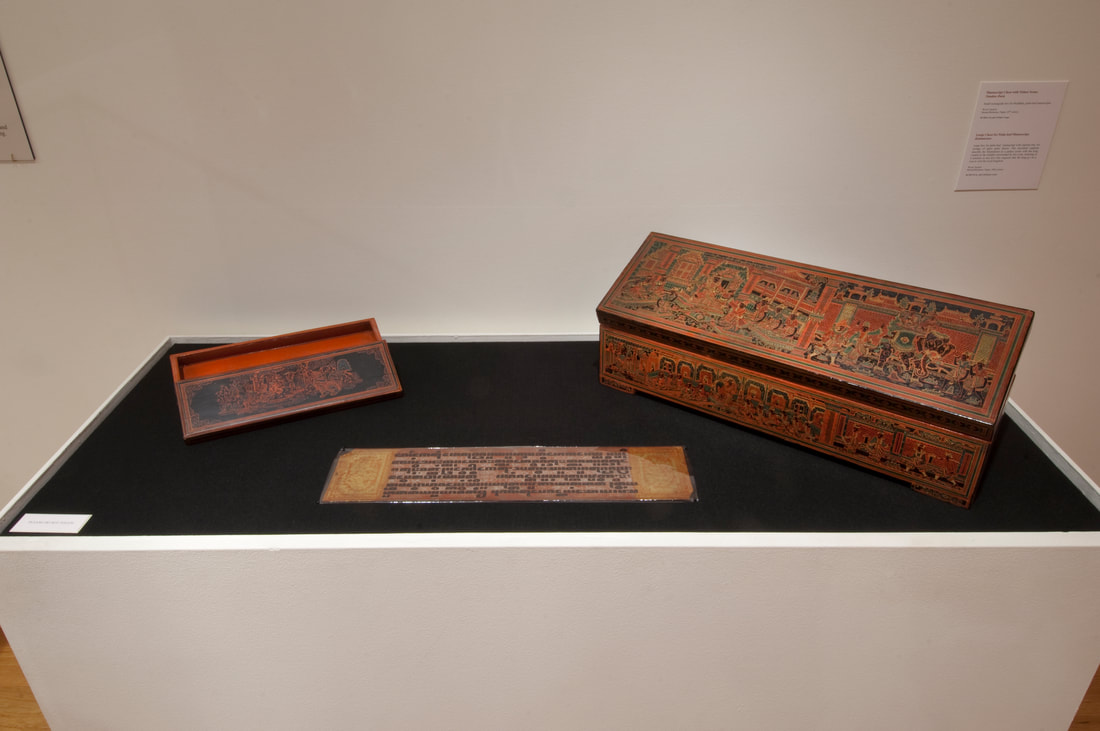Legacy in Lacquer:
A Living Art from Burma
August 24 - October 2, 2010
Northern Illinois University
North Galleries, NIU Art Museum
Northern Illinois University
North Galleries, NIU Art Museum
|
Lacquer has a long tradition in Burma—as a medium and as an evolving art form there for more than a full millennium. It was used both to fabricate and to decorate ordinary household wares as well as ceremonial objects for the nobility and Buddhist monasteries. In the nineteenth century under colonial British rule, lacquerware became a valuable commodity for Western export.
Lacquer originates from the sap of a tree native to much of tropical Southeast Asia, which when processed and polished yields its characteristic high-gloss appearance. It is also a material notable its natural plasticity and its ability to be easily applied to, and adhere well to, nearly any substrate: Its visual impact can be stunning —objects are dazzlingly coloured, usually with a dominance of scarlet, gold and black, and are sometimes also inlaid with . . . glass to produce a splendid effect of shimmering iridescence. (Isaacs and Burton, Visions from a Golden Land, 2009) Based on examples from the NIU Burma Art Collection originating from the renaissance of lacquerware during the British colonial period to the present, this exhibition will explore the techniques and the designs of a vital living art. |
